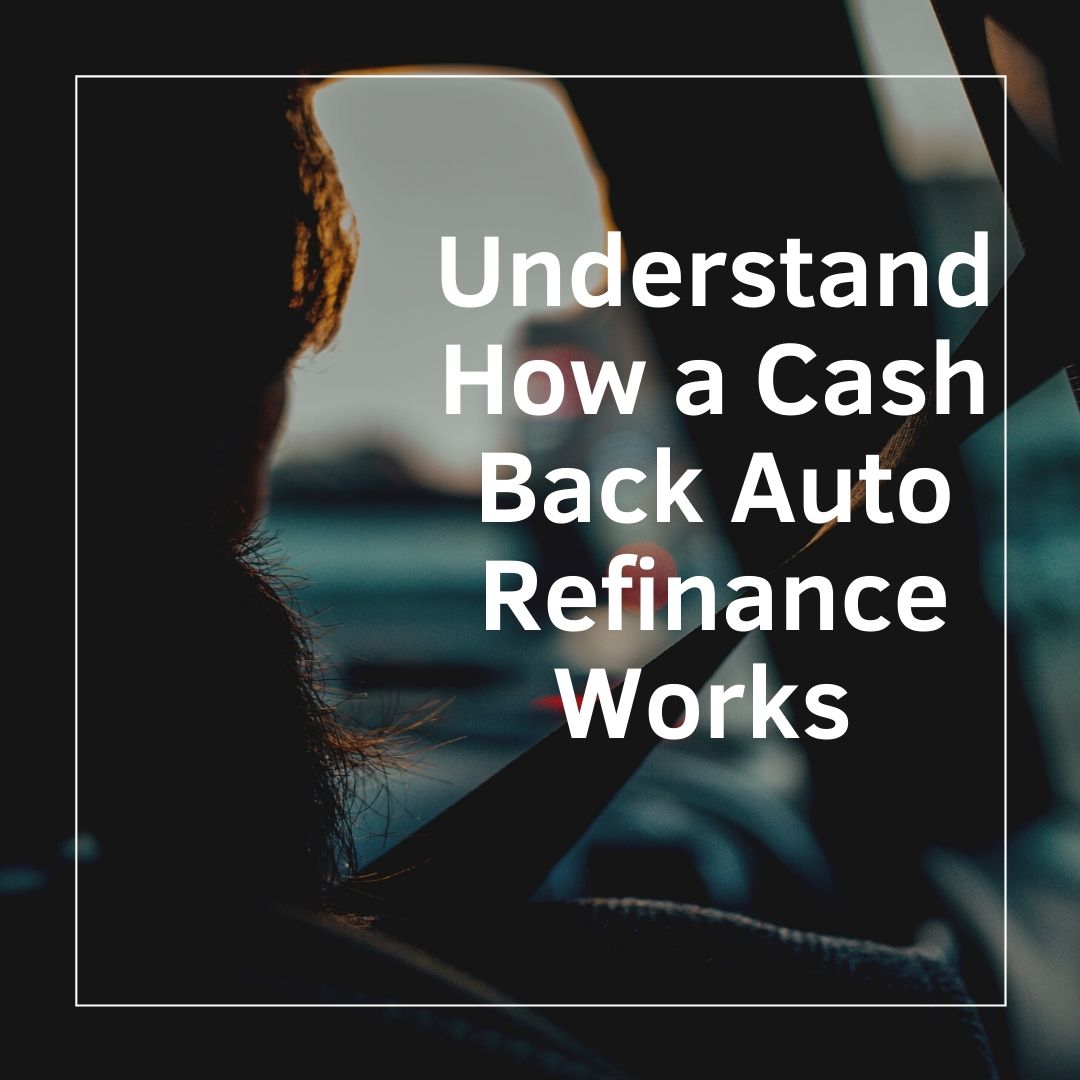
A cash-back auto refinance is similar to homeowners refinancing their homes to pull equity or cash out. When you do a cash-back auto refinance, you’re essentially replacing your current loan with a new one and then borrowing an extra amount against the equity you may have in your car. This means you’re essentially borrowing more than what you owe on your car.
However, the amount you borrow is based on how much equity you have in your vehicle and what your credit looks like. Equity is the amount you still owe on your loan relative to your vehicle’s value. If your car is worth $15,500 and you still owe $15,000, the equity is $500.
A cash-out auto refinance may provide you with a better interest rate on your auto loan. Besides a better interest rate, there are many reasons why vehicle owners choose to do a cash-out refinance. Mostly, the extra cash can be used to cover a specific expense, such as a medical bill or to pay off credit card debt.
Keep in mind that a cash-back refinance involves increasing your debt, and if you already have a lot of debt and not enough savings, it can be a slippery slope. Missed payments or defaulting on your loan can result in negatively impacting your credit score, along with the potential for your vehicle to get repossessed.
Taking on more debt is a big deal, so be sure to have a plan for how you will repay the debt. Assess your monthly budget and see where you can scale back on your spending habits so you don’t put yourself into more debt.
Once you have a plan for repayment in place, you need to apply and get approved for a cash-back refinance. Here’s what you need to know about this type of loan, which may provide you with the extra funds you need to help with your current financial situation.
What is a cash back auto refinance?
When you take out a new loan for a cash-back auto refinance, you’re essentially replacing your current loan with a brand new one. The amount you receive and your interest rate depends on the equity you have in your car, your credit, and your lender. Depending on the lender, you may receive the funds in a lump sum.
For example, let’s say you were approved for a refinance of $10,000 but your existing loan is $9,000. This would cover your current loan of $9,000, plus the $1,000, which is the equity you have in the car. You’ll receive $1,000 in cash and in total, you must repay 10,000 plus interest.
How does auto refinancing work?
A regular auto refinance is a similar process as a cash-out, with the main difference being the cash-out part. When you refinance your auto loan, you need to apply for a brand new loan, which will pay off the existing loan with a lower interest rate. Auto refinance comes with upfront fees, so it only makes sense to refinance if your interest rate is lower and outweighs the cost of the fees over the life of the loan.
Unlike a normal auto refinance, an approved cash-back refinance will quickly provide you with the cash you need.
Pros and cons of auto refinancing
There are benefits and disadvantages of a cash-back auto refinance. The most important part is to have a plan for how you will repay the loan. Examine your monthly budget, which can be as simple as reviewing the last three months of your spending vs. income. Also, make sure you understand the terms of the loan—how much you need to repay, when, and for how long.
The pros of cash-back auto refinancing may include:
- Lower interest: If you can secure a lower interest than what you’re currently paying on your existing auto loan, you may be able to save money over the life of the loan.
- Lower monthly payments: Not having such a high monthly payment may provide you with some wiggle room to dedicate more money to paying down higher interest debt, for example.
- Quick access to funds: A way to gain access to cash quickly.
Keep in mind that even if you qualify for a lower interest rate than your original loan, if the length of the loan is shorter than your current loan, you may need to pay more each month. Conversely, a long, drawn-out term also means you are paying more over the life of the loan.
Tapping into your vehicle’s equity through a cash-out auto refinance may provide you with the cash you need, but it’s also important to understand the potential pitfalls that may put you at a financial disadvantage.
Here’s what to watch out for:
- Stretching your budget too thin: You are increasing your existing debt, which may put added strain on your finances, especially if you don’t have a plan to repay it or you’re uncertain if you will be able to afford the higher payments. This puts you at greater risk of defaulting on your loan.
- Vehicle depreciation: You could be underwater on your auto loan because vehicles tend to depreciate quickly. If you borrow 100 percent of your car’s value and end up getting into an accident or total the car, you could be responsible for covering the difference between the value of the car and what you owe on the loan.
- Pro tip: Make extra payments or more than the minimum monthly payments. These efforts could help you avoid defaulting on your loan and set you up to pay off your loan early. Be sure to double check with your lender to make sure they don’t charge a fee for paying off the loan early. This is known as a prepayment penalty fee.
- Repossession: If you can’t repay the loan or have trouble making payments, your lender may repossess your vehicle. This will also leave a negative mark on your credit history and hurt your credit score.
How much cash do you actually get?
When it comes to the extra cash and the amount you receive, there are a number of factors that may affect how much you get approved for. These include:
- Your car’s value: Get an accurate estimate of what your car is worth by using popular auto websites that can assess the condition of your car by make, model, and history. Also note that the lender may require an in-person inspection to determine your vehicle’s value.
- Your current debt: The amount you owe on your original loan or existing loan.
- Credit: Your credit score tells the lender how creditworthy you are. If your credit score needs work, your lender may not approve you for an amount that is significantly higher than your car’s value. If your credit is poor, it may be a good idea to improve your credit before you apply. Simple ways to improve your score may be to pay your bills on time each month or pay off an outstanding credit card bill.
- The lender: Every lender is different, so some may allow you to borrow up to 100 percent of the value of your car, as long as you have equity. It’s important to understand what different lenders offer and what restrictions they have.
Is a cash back auto refinance loan actually worth it?
If you can’t get approved for a lower interest rate or feel you may end up underwater on your loan, it may not be worth the hassle. Instead, you may be better off waiting a few months and working to improve your credit score. This improves your debt-to-income ratio, which is your total debt relative to your total available credit, including loans and credit cards.
For example, if you have three credit cards with a total available credit of $5,000 but have spent $2,500, your debt-to-income ratio is 50 percent. This DTI is considered too high. Experts advise keeping this number below 30 percent.
The best situation for a cash-back refinance is when you can secure a lower interest rate and terms for the loan, plus receive the cash you need immediately.
There are many different reasons why people need cash on hand, but here are a few ideal situations for when a cash-out auto refinance could be worth it:
- Consolidating high-interest debt: If you qualify for a lower interest rate, you can use the funds to pay off higher-interest debt, such as credit cards. This may help you pay off more expensive debt and save money.
- Peace of mind: Using the cash to pay a large expense such as medical debt can help free up your monthly budget so you can save more or pay your other bills on time.
Bottom line
A cash-out auto refinance may allow you to borrow money at a lower rate than what you currently have and provide you with the cash you need.
In order to understand whether a cash-out auto refinance makes sense, assess your situation and your finances. Have a plan for repayment so you can set yourself up for success and accomplish your financial goals, whether it’s to pay down expensive, high-interest debt or have some cash on hand in the event of an emergency.
Kim Tran is the Social Media and Content Manager at Upstart. Upstart is a leading AI lending platform partnering with banks to expand access to affordable credit by enabling effortless credit based on true risk.


